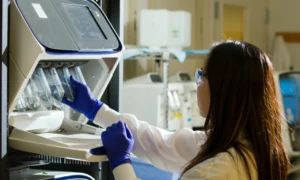Introduction:
Food poisoning, known as intoxicación alimentaria or intoxicación por alimentos in Spanish, is a prevalent global health issue. It occurs when individuals consume contaminated food or beverages, resulting in various symptoms and discomfort. In this blog, we will Discuss The sources, symptoms, treatment, and prevention of food poisoning in Spanish, equipping you with essential knowledge to prioritize your well-being and safety.
Causes of Food Poisoning: Food poisoning can stem from various factors, including bacterial contamination, viral infections, and parasitic infestations.
Bacterial Contamination: Bacteria such as Salmonella, E. coli, and Campylobacter are frequently responsible for food poisoning. These microorganisms can contaminate food during processing, handling, or storage, leading to illness upon consumption.
Viral Infections: Viruses like Norovirus and Hepatitis A can be transmitted through food or water. Poor hygiene practices during food preparation or inadequate sanitation can contribute to viral food poisoning outbreaks.
Parasitic Infestations: Parasites such as Giardia and Cryptosporidium can be present in contaminated water or improperly cooked food, causing food poisoning when ingested.
Signs of Food Poisoning: Food poisoning symptoms can vary depending on the specific causative agent and individual health conditions. Common signs include nausea and vomiting, diarrhea, abdominal pain, fever and chills, and dehydration.
Treatment of Food Poisoning: When experiencing food poisoning, it is crucial to allow your body to recover naturally. The following measures can help alleviate symptoms and facilitate recovery:
Hydration:
Maintain adequate hydration by consuming plenty of fluids, including water, clear broths, or rehydration solutions. This helps replace lost fluids and electrolytes.
Rest:
Provide your body with sufficient rest to aid recovery and regain strength. Avoid engaging in strenuous activities that can further deplete your energy.
Medications:
Over-the-counter medications such as anti-diarrheals and antiemetics can offer temporary relief from symptoms. However, it is important to consult a healthcare professional before using any medication, especially for children or individuals with underlying health conditions.
Preventing Food Poisoning:
Prevention plays a vital role in avoiding food poisoning. Here are Some practical tips to reduce the risk of contamination:
Practice Good Hygiene:
Wash Your hand with Soap before handling food, after using the Washroom, and after touching raw meat or poultry.
Thoroughly Cook Food: Ensure that food, particularly meat, poultry, and seafood, is cooked to the recommended internal temperatures to eliminate bacteria and parasites.
Properly Store Food:
Promptly refrigerate perishable foods at the appropriate temperature to hinder the growth of harmful microorganisms.
Prevent Cross-Contamination:
Keep raw and cooked foods separate during storage, preparation, and serving to prevent cross-contamination and the transfer of bacteria. Mindful Consumption of Water and Beverages: Consume safe drinking water and exercise caution when consuming raw or uncooked food, especially when traveling to areas with uncertain water quality.
Conclusion:
Food poisoning in Spanish is a significant health concern that can affect individuals regardless of age or geographical location. By understanding the causes, symptoms, treatment, and prevention measures associated with food poisoning, you can take proactive steps to safeguard yourself and your loved ones. Remember to prioritize good hygiene practices, proper food handling, and thorough cooking to minimize the risk of contamination. Stay informed, stay vigilant, and prioritize your well-being.







































